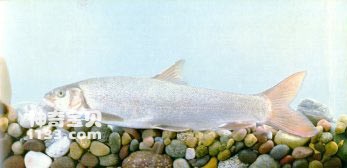Schizothorax (Racoma) davidi belongs to the order Cypriniformes, family Cyprinidae, subfamily Schizothorax, genus Schizothorax, and subgenus Schizothorax. Commonly known as: Yayu, heavy-mouthed fish, heavy-mouthed thin-scaled fish, heavy-mouthed thin-scaled fish, and thin-slipped soft-shelled turtle. English name: David’s schizothoracin.

The body is long, slightly flattened laterally, the head is tapered, and the mouth is lower and horseshoe-shaped. The upper and lower lips are fleshy and thick, and the lower lip is divided into 3 lobes; the middle lobe of smaller individuals is obvious, and the middle lobe of larger individuals is extremely small and covered by the left and right lower labial leaves; the left and right lobes are wide and become free lip folds at the rear edge. The posterior labial groove is continuous; the inner side of the mandible is slightly keratinized, but does not become a sharp keratinized edge. There are 2 pairs of barbels, approximately equal in length or slightly longer. The muzzle reaches the edge of the eye or exceeds it, and the end of the barbels exceeds the back edge of the eye. The scales are small and neatly arranged. There are obvious scales on the chest and abdomen. There are larger imbricate scales on both sides of the anal fin and anus. There are also several large scales under the lateral line behind the gill opening. There are also several large scales under the lateral line behind the gill opening. scale. The dorsal fin spines are weak, but the trailing edge is serrated. The upper part of the body is blue-gray, and the abdomen is silvery white. In some smaller individuals, there are fine black spots on the upper part, and the tail fin is light red. During the reproductive period, white beads appear on the male's head.
Schizothorax is a cold-water fish. It usually lives in slow-flowing rivers. During the feeding season, it moves in environments with sand and gravel bottoms and fast currents. After autumn, it swims downstream and settles in deep pits or in rivers. Overwinter in underwater caves. The reproductive season is usually from August to September, and eggs are laid in gravel river beds with fast currents. It mainly eats animal food, and its mouth can be freely retracted to feed under gravel; almost 90% of its food is aquatic insects and insect larvae, and it also eats small fish, shrimps and a very small amount of algae.
Distributed in the main tributaries of the Yangtze River, especially in the canyon rivers of the Jialing River, Minjiang River, and Tuojiang River systems.
The flesh of this fish is plump and rich in fat. They grow faster and are larger in size, generally growing to 1-3 kg, and the largest individual can reach 10 kg. The production is abundant, and the production in the production area is second only to Schizothorax. In the Ya'an area, Schizothorax and Schizothorax are collectively called "Yayu", and they are both famous for "Ya'an Casserole Fish Head". In addition to the edible meat, the eggs are poisonous and can also be eaten after being cooked. It is an important economic fish in the tributaries of the upper reaches of the Yangtze River and is also a stocking target for local development of small and medium-sized water body aquaculture.
animal tags:
We created this article in conjunction with AI technology, then made sure it was fact-checked and edited by a Animals Top editor.